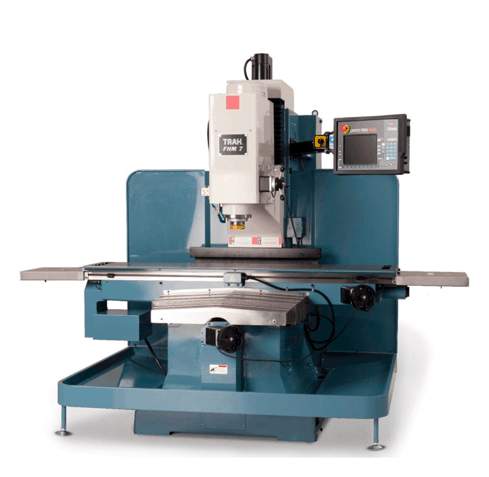Milling is a common machining process that involves the use of a machine, known as a milling machine, to remove material from a stationary workpiece using a rotating cutting tool. With milling, the workpiece remains stationary, whereas the cutting tool rotates. As the rotating cutting tool presses against the workpiece, it removes material.
Milling Machines
Milling machines are very functional and resourceful. Ranging in size depending on the use, these milling machines use a selection of tools to carve and drill into raw materials to make shapes and nearly finished products.
Vertical Milling Machines
Vertical milling machines are more widely used than horizontal milling machines. They feature a vertically oriented cutting head or spindle. The cutting tool is rotated against the workpiece. The spindle will move up and down, removing material by pressing against the workpiece.
Vertical mills are ideal for projects worked on a single side like operating with large metal plates and sinking dies. There are two vertical milling machines types: bed milling machines and turret milling machines.
Turret Milling Machines
the table and spindle can move perpendicularly and parallel to the axis. A turret mill is very versatile, given how it can manipulate the material’s position in both directions.
Bed Mill

A bed mill, on the other hand, moves the material perpendicular to the axis. In the case of this milling machine, the spindle is fixed to the vertical axis and can only move up or down as required. This mill is excellent for projects that need heavier pieces
The Best Features of Vertical Milling Machines
Popularity: Because of its low upfront cost and efficiency, these mills are prevalent.
Efficiency: The structural design of vertical mills gives operators better visibility while working. This will give the operator(s) a chance to easily administer the milling as it commences.
Horizontal Milling Machines
Horizontal milling machines feature a similar design in which a spindle containing a rotating cutting tool presses against a workpiece to remove material from the workpiece. Horizontal milling machines differ from their vertical counterparts in several ways.
Horizontal milling machines are able to perform heavier, deeper cuts than vertical milling machines.
Horizontal milling machines usually feature different cutting tools than vertical milling machines. They have shorter and thicker cutting tools while vertical milling machines usually have long and thin cutting tools. Horizontal mills are better suited for more complicated projects. These machines will complete the tasks much quicker, though it’s more expensive.
The Best Features of Horizontal Milling Machine
Chip Evacuation: Due to the horizontal mills’ setup, when cutting is ongoing, gravity will aid in pulling the chips out. Finished products have cleaner surface finishes.
Solid Construction: Horizontal mills are constructed more heavily and can deal with bigger volume production jobs. The machine parts are built to last longer.
Both vertical and horizontal milling have their merits. When choosing between them you should consider the major factors in deciding whether the milling is more suited to vertical or horizontal milling.
For additional information on general milling, or for any inquiries, please contact Epic Tool by phone or email using the contact information given on our website.

